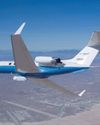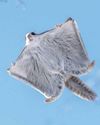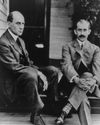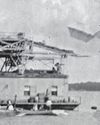
Over the decades, other U.S. presidents have used variations of it to warn foreign nations against interfering in the politics of the Western Hemisphere. Some presidents have used it to insert the United States in the affairs of its neighbors.
For Monroe, threats from Europe inspired him to take this step. In 1821, several Spanish colonies in the Americas had declared their independence. The United States recognized those places as new countries. In Europe, however, the Holy Alliance urged Spain to reclaim its empire in the New World.
The United States was determined to prevent European nations from threatening the new republics in its "sphere of influence." Monroe introduced the Monroe Doctrine in his seventh annual address to Congress on December 2, 1823. He told Congress "We should consider any attempt on [the part of the European nations] to extend their system to any portion of this hemisphere as dangerous to our peace and safety."
The doctrine stated that the United States would not interfere in the affairs of Europe or its colonies. It also insisted that North and South America were not subjects for future colonization by European powers. The doctrine made clear that interference by a European power in a Western country that had declared its independence would be considered a threat to the United States.
It was a bold statement. In the 1820s, the young United States did not have the military or political might to back up its new policy. Yet the Monroe Doctrine governed the foreign policy of the United States for many years.
This story is from the September 2023 edition of Cobblestone American History Magazine for Kids.
Start your 7-day Magzter GOLD free trial to access thousands of curated premium stories, and 8,500+ magazines and newspapers.
Already a subscriber ? Sign In
This story is from the September 2023 edition of Cobblestone American History Magazine for Kids.
Start your 7-day Magzter GOLD free trial to access thousands of curated premium stories, and 8,500+ magazines and newspapers.
Already a subscriber? Sign In

Eye in the Sky
An interview with Joe Piotrowski

Airborne Animals
Humans have taken to the skies in balloons, gliders, and airplanes-but we're not alone among the clouds. Animals of all sorts have evolved to harness wind power.

TAKING OFF
The Wright brothers expected airplanes to “take off,” but even they might be amazed at the way the airline industry has become big business. In the past, it was expensive to send something by plane.

GROWTH OF AN INDUSTRY
After their historic flight at Kitty Hawk in 1903, Wilbur and Orville Wright returned to Dayton, Ohio. They spent the next few years making adjustments and building additional versions of their powered aircraft in their bicycle shop.

WHY KITTY HAWK?
The Wright brothers searched carefully for the best place to test their gliders and flying machines. Their main concern was for good, steady winds. But they also hoped to find a remote location to allow them to perform tests away from the public eye.

Two Brothers From Ohio
Most people do not realize that the Wright brothers—Wilbur, born in 1867, and Orville, born in 1871—performed various scientific experiments before inventing their aircraft. For as long as anyone in their hometown of Dayton, Ohio, could remember, the Wright boys had worked on mechanical projects.

A Helping Hand
May 6, 1896. A group of people who had gathered beside the Potomac River, just south of the U.S. capital, grew quiet. Then, it erupted in cheers as a small, unmanned aircraft took to the skies and flew for more than half a mile. The flight came seven years before the Wright brothers’ first manned, powered flight. The inventor of the aircraft was Dr. Samuel Pierpont Langley.

THE IDEA MEN
People dreamed of flying thousands of years before the Wright brothers found success near Kitty Hawk, North Carolina. These dreamers, such as Leonardo da Vinci, studied birds flying and imagined how humans might do the same—if only they had wings. Other men developed a more hands-on approach to the topic. Early inventors made wings of cloth, glue, and feathers and tied these creations to their arms in an attempt to imitate nature.

Da Vinci's 4 Designs
Have you ever wondered how a bird flies? Leonardo da Vinci (1452–1519) did. He thought that understanding how a bird flies would provide the key to human flight. So, what did da Vinci learn from birds?

Silken Wings
Seven hundred years before the Wright brothers began experimenting with human flight, the Chinese had already mastered its secrets—with kites.